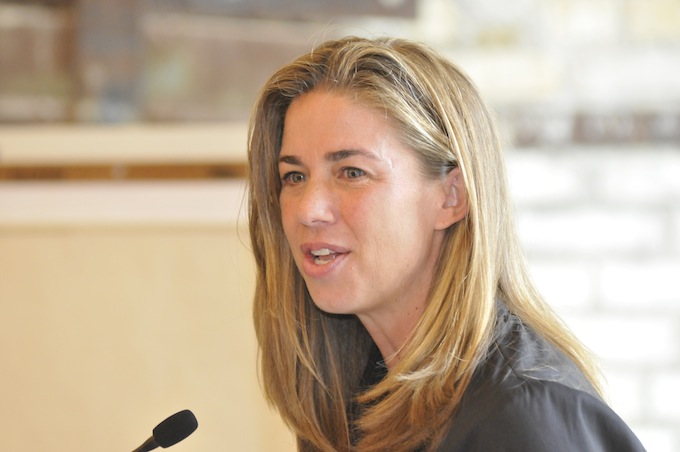
On February 27, 2012, fifty-some leaders from the academic, design, and funding communities convened at the New York offices of the Rockefeller Foundation for the Social Impact Design Summit. Convened by the Cooper-Hewitt, National Design Museum in conjunction with the Lemelson Foundation, National Endowment for the Arts, and Surdna Foundation, the convening aimed to develop tools and resources to support the emergence of a social impact design movement from the myriad activities occurring under this broad banner today. Social impact design is increasingly recognized as a critical ingredient in developing resilient communities, but its practice is so amorphous that building a movement to support its growth necessitates collaborations and convenings like the Summit. From my vantage point as both a funder and practitioner, I see two key challenges facing the field of social impact design:
- There is not yet a common language for describing social impact design, much less training for its execution, metrics to measure its impact, or resources available to further the field.
- Social impact design needs to be funded more aggressively and strategically across the nonprofit sector. While it is important to focus on the outcome and impact of a project or development, the success of that is determined in large part by the rigor and inclusiveness of the process.
There were a dozen funders present at the Summit who are asking what role philanthropy can play in supporting the launch of this movement, and to what end. I believe that philanthropy must take a larger role in highlighting and prioritizing the importance of design for nonprofits to more fully advance their missions. I recently had the chance to visit Via Verde, the mixed income housing development in the South Bronx, hailed by Michael Kimmelman in The New York Times as one that “rethinks the mix of private and public spaces and makes an argument for the civic value of architecture.” The project took design seriously from the earliest stage of its envisioning, starting with the “New Housing New York” legacy competition that empowered future residents of the community to voice their vision for the outcome of the design process. Via Verde is surrounded by new housing built over the past several decades, but the difference in results cannot be overstated in terms of how those developments look, function, and sit in the neighborhood. By funding the design process and placing value on it, Via Verde shows we can develop greater capacity to support the shared methodology and skills needed to advance other social impact projects that use excellent design to raise the bar on the communities we are creating. At Enterprise, we have made a major commitment to funding design—and designers—to build a design infrastructure within the community development sector. We believe strongly, and know from experience, that quality design makes a vital difference, but also that we must invest in design early in the process to have good results. Enterprise has invested over $860,000 in grant funding to support over 170 affordable housing developers to establish an integrative design process. We recently published a report profiling the impact this process has had in elevating the design excellence in green developments. Most significantly, earlier this month, Enterprise introduced a new Pre-Development Design Grant into our efforts to incentivize the process of design for developers. Through our experience sponsoring 40 Enterprise Rose Architectural Fellows, who have worked with community-based organizations throughout the country, we know that this field is attracting some of the most talented emerging designers to community social impact design work. We need to provide this cadre of socially responsible design graduates with many more opportunities like the Enterprise Rose Fellowship to develop the skills and tools to make their commitment into an enduring career path possible. If we want to support a cohesive and successful social impact design movement, we have to fund the process of design directly. Currently, grassroots efforts are emerging all over the country, but they lack adequate infrastructure and support. As a result, there is no shared vocabulary, toolset, metrics, or robust network among social impact designers. Until funders fully embrace this movement with the resources it needs and deserves, we will not have the capacity to help social impact design realize its full potential to contribute to strong, resilient communities.
Katie Swenson is a national leader in sustainable design for low-income communities. Katie oversees Design Leadership for Enterprise Community Partners, Inc., directing the Affordable Housing Design Leadership Institute and the Enterprise Rose Architectural Fellowship. Under her tutelage, 40 fellows are responsible for completing 5,500 units of housing and 46 community facilities. The program fellows remain leaders in community design, spearheading a national movement of architects back to community service and social activism. A Rose Fellow herself from 2001-2004, Katie later founded the Charlottesville Community Design Center and, in partnership with Habitat for Humanity led it to establish an influential and acclaimed international design competition. The competition’s innovative lessons are recounted in “Growing Urban Habitats: Seeking a New Housing Development Model,” which Katie co-authored with William Morrish and Susanne Schindler. Named an emerging leader by the Design Futures Council, Katie is also listed among Steelcase’s prestigious Green Giants. Katie holds a bachelor’s degree in comparative literature from the University of California-Berkeley and a master’s degree in architecture from the University of Virginia.